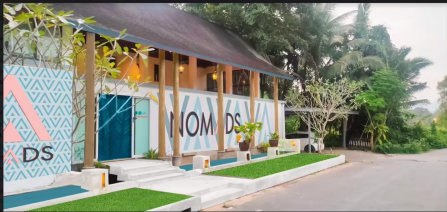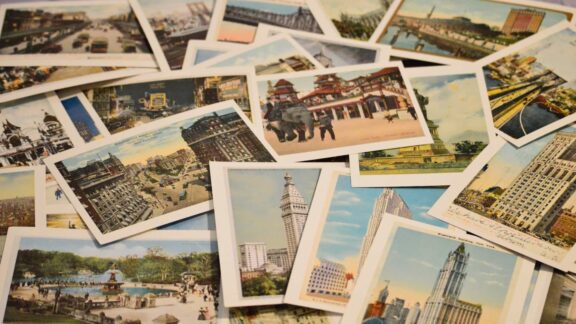|
|
You’re reading this article because you love to travel. You’re reading this article because you are curious and brave and love nothing more than a trip to an unknown country. You are reading this article because you belong to a community that sees no national boundaries and shares a common lust for wanderlust. But how did this community evolve? And where does this act of ‘backpacking’ originate from? Where did it all begin? Here’s a little of snapshot of the moments in history that helped to define the nomad within you.
Dictionary definition of Backpack (verb): to go on a hike, using a backpack
Urban dictionary definition of Backpacker: Backpackers are a very loose subculture of travellers who carry all their stuff with them in a backpack. Typically they are driven by a sense of adventure, and as such are always trying to find somewhere beautiful, completely off the beaten track. They often travel as cheaply as they can to maximise the time they can spend on the road, accepting squalid accommodation or sharing rooms if it will save them any money.
The Grand Tour
Prior to the 17th and 18th centuries, the idea of travel was mostly perceived as a negative act, surrounded by the notion that for one to travel, he or she must be fleeing by foot from warfare, disease and tragedy. It was not until the 17th century that travelling became a form of education and excitement. Much like the traditional Gap Year that many Europeans undertake today, many wealthy European men of the 17th century would take ‘a grand tour’ of surrounding countries before settling down to marriage – ‘a last hurrah’ if you’d like to call it that!
The Silk Route: 1955
In 1955, a bunch of English University students embarked on an overland expedition to follow the trail lead by Marco Polo 700 years earlier – the infamous Silk Route – connecting the East to the West. The students documented their journeys and the word of the overland soon reached the curious young people of the West – sparking the beginning of the Hippie Trail…
The 60s Hippie Hashish Trail
Talk of the Silk Route soon sparked the birth of the Hippie Trail – a route extending from Europe to India. This is the moment in history when the idea of ‘backpacking’ really began to emerge. With the cost of air travel unattainable by the average “Jo Blow” or young university student – westerners were excited by the notion of travelling overland by local transport, walking trails and hitchhiking.

Talks of paradise, beaches and legal drugs aroused the counterculture and youngsters eager to break away from the frameworks of society.
The Beatles 1968 trip to India further fuelled a desire to explore the East. Marijuana was readily available in Afghanistan, Kashmir and Nepal and until 1973, was legal to buy in local hashish or charas, in shops.
With a surge of the counter culture, bus companies jumped onboard to offer transportation and many backpackers bought minivans and motorbikes to make the long journey. Some never came back – the journey was in fact, 6,000 miles and at times passing through mountains and dessert.
Travellers fled to Kathmandu which gave birth to “Freak Street” where hashish flowed (which soon evolved into Opium and Heroin) and ‘freedom’ overcame any urges to return home to study, get married and pursue a life of ‘normality.’ The term ‘hippy’ was coined by mainstream society and the hippies referred to themselves as freaks. Today Freak Street, actually known as Jhhonchen Tole, still resembles the hippie hangouts and hashish shops of the 60s.

The hippies tended to spend more time interacting with the local population than traditional sightseeing tourists – they had no interest in luxury accommodation, even if they could afford it (which few could), and some would “go native” after a fashion, particularly in India. Of course, they were still tourists really, albeit of a different sort, and hedonism was the primary aim
As laws began to tighten in Nepal throughout the early 1970s, hippies began to flock to the beaches of India – Goa being a popular spot. Shacks were built in the forests and were lined across the beaches. Meditation, ‘families,’ free sex, LCD, hashish, ‘community’ and electronic music flourished as Goa’s new inhabitants preached religion, spirituality and peace. It wasn’t all beaches and sunshine however. Overdose and insanity gave way to a dark undertone of the free life. Many travellers became sick or even found themselves in jail.
Due to warfare and political unrest in the 1970s, the hippie trail soon became a little harder to pursue as Afghanistan and Iran soon became unsafe for overland travel. By this stage however, airfares became more available and those venturing to India began to explore and cultivate alternate trails.
The Backpacker Guide
In an era deprived of the internet, travellers relied on stories and word of mouth to make their way along the hippie trail. Soon enough, handwritten notes were soon being traded along the route. In 1973, Lonely Planet published its first ever guidebook “Across Asia on the Cheap’. The rest is history…
Banana Pancakes
The co founders of Lonely Planet were soon in such high demand of their guide book, they decided to take a motorcycle trip throughout South East Asia. During this time, many Australians and New Zealanders were beginning to make their way to Nepal and India via their southern counterpart – Thailand.
Soon, talk of untouched paradise in South East Asia encouraged travellers to venture beyond the hippie trail and explore what soon became known as the Banana Pancake Trail – spanning across Thailand, Cambodia, Indonesia, Laos and beyond.
With an influx of western tourists, road side stalls and guesthouses began to serve a western favourite – ‘Banana Pancakes.’

Pre 60s Exploration
The term ‘backpacker’ has forever been associated with the ‘hippies’ and ‘freaks’ of society. Pre 60s exploration, hiking and trails were a popular form of education and entertainment – noting that Everest was first conquered in 1922 and the infamous Appalachian Trail was first walked through in the 1950s.
Explorers travelled with a backpack and although they shared the same sense of freedom and lack of material possessions as ‘the hippies’ – history failed to coin these type of adventurers as backpackers, most likely due to the fact that long expeditions required a lot of equipment and hence – money!
The Gringo Trail
Meanwhile, as hippies returned to the United States with stories of freedom, the Gringo Trail soon became apparent. Horse trails had existed between the US and Mexico for years and soon became a popular trail for overland ventures. With the uproar of civil warfare in the US, many travellers made their way south along the “Gringo Trail” to live an uncomplicated lifestyle on the Central and South American shores.
Internet
Travel Guide books were of an abundance by the 1990s and soon the internet became a huge vehicle for communication, tips, advice and facts. Travel guides however, soon became available online and a level of planning was easily achievable before departing one’s home country. Most travellers carried a Discman, a camera and a guide book (with some also taking a mobile phone). Travellers could share their photos via email and upload them to the web. With this influx of accessible knowledge – people had less worry for the ‘unknown’ and new countries, trails and routes opened up.
The digital camera allowed travellers to upload photos whilst on the road and international call cards made for a quick and affordable check in back at home. Guesthouses and activities could soon be researched ahead – and a quick phone call enabled a pre arrival booking. Backpacking as we knew it – was changing.
Hello Smart phones
Today, we backpackers are spoilt for knowledge and security. Technology has paved the way for Google Maps and social media allows us almost free and instantaneous communication with fellow travellers and friends at home. Almost everything can be pre booked before arrival.
Guide books and maps are now a ‘non-necessity’ and we can arrive in an unknown city with absolutely no knowledge of what to do and what to see, safe in the fact that we can plan a day’s itinerary with a click of a button. Word of mouth now takes a different form – online. We carry a phone, an MP3 player, a guide book, a map, our money, our passport, our tickets and a world of knowledge in a smart phone.
With this evolution, the term ‘backpacker’ has since distanced itself from society’s definition of ‘hippie.’ There is no doubt however, that the act of backpacking and the community in which we belong to, still holds a certain aspect of freedom, nomadic openness and rebellion within us.
But has technology spoiled the thrill of excitement? Has technology decreased our urgency to communicate with fellow backpackers and locals for advice and information? Have we lost our freedom and fire to venture beyond the ‘trail?’ Are we as brave and fearless as our earlier backpacking descendants? What do you think? Comment below.




I was one of those 1971-72 backpackers who travelled around Europe for months, but instead of heading for the Hippie Trail to Asia there was a much smaller and more intrepid group of us who found a way to cross the Sahara Desert on the back of local trucks through the Spanish Sahara and Mauritania to Senegal and West Africa. I travelled west with a Canadian I met in Dakar through Mali and Upper Volta (now Burkino Faso) and down to Ghana, where I met quite a few other backpackers at a hostel in Accra. I got the taste for Africa and returned five times as a backpacker and as a journalist, before falling in love with Nepal, Bhutan and northern India.
Great article ! Keep doing that ! 😉 Thanks a lot.
Hi
This is a good article though you need to know that Tony and Maureen Wheeler are British not Australian (he born in England and she in Northern Ireland): https://en.wikipedia.org/wiki/Tony_Wheeler.
Look forward to seeing the correction 🙂
Great article! I wish I should experience the traveling back then. It’s still good but like you said, different with all the technology that we have know 🙂
Great stuff, brings back so many memories. I was on the “Gringo Trail” (Colombia and Ecuador mainly) back in 1975-76, and then spent nearly a year backpacking in South and Southeast Asia in 1978-1979. No Internet, no phones, no ATMs, occasional letters at Post Restante when in Bangkok or Kuta or Kathmandu; waiting for money transfers from friends and parents at dodgy banks, noteboards in hotels (“Lake Guest House at Samosir Island in Toba has good cheap rooms and good weed”). I’ve spent decades since then working and living (for 11 years) in SE Asia (Indonesia and Philippines) and been in many other places, and the changes are remarkable. My wife and I were just on a scientific expedition on a small ship for a month on the island of South Georgia (near Antarctica) — about as remote as you can get, zero permanent human population — and we still had email and, when weather was kind, ship’s Iridium phone for emergencies. No planes go there, you either go on a luxury eco-cruise ship, or on our version, 85 foot working vessel, across the Drake and the Scotia Sea, 5 bone-crushing days of the highest seas on the planet, there and back, WhatsApp and such have shrunk the world. Good aspects, some stuff I don’t like, but it will never be the same. You can still get away (much of Myanmar has just opened up to travel in the past few years and you can have an Eastern Indonesia in the 1970s experience there for sure, off the grid), but it is getting harder, And the Internet leads to sheep-think, everyone goes the same places, even more than in the Lonely Planet era.
Heading to Sri Lanka for an anti wildlife trafficking meeting in May (CITES Convention, for those into that stuff) – for work, not play – for the first time in exactly 40 years, that will be interesting!.
My book: Turnip Road, Beyond the Hippie Trail from Southend to Sydney, will be published soon about my backpacking journey in 1973.
If you are interested please contact me at dick.durham@btinternet.com
I am an architecture student from India, currently studying in my final year. My thesis research is on backpacking and how as an architect can i design spaces to enhance the experiences of backpackers.
I have been trying to find research books to understand the history of how the term backpacking came into existence. Also how it has developed over the years. However, I couldn’t find much information on the history aspect. The research papers and books are mostly on backpacker tourism currently and its future.
After reading this article, I would be extremely grateful if you could suggest some references on the same. It will be very helpful for understanding the whole field in depth, which will eventually have a great impact on the spaces that i design . Thank you in advance.